- Why I Leverage Hypoxic Training
- 10 Benefits of Intermittent Hypoxic Training
- 1. Boosts the Immune System
- 2. Detoxification
- 3. Helps Treat Chronic Fatigue and Fibromyalgia
- 4. Increases Red Blood Cell Count
- 5. Improves Aerobic Exercise Performance
- 6. Increases Blood Flow
- 7. Reduces Alcohol Withdrawal Stress
- 8. Slows Down Cognitive Decline
- 9. Speeds Up Recovery After Respiratory Infections
- 10. Triggers the Creation of New Blood Vessels
- Is Intermittent Hypoxic Training Safe?
- Intermittent Hypoxic Training vs. Altitude Training
- How Altitude Training Has Positively Impacted My Body and Mind
- Frequently Asked Questions
- Summary and Final Thoughts
The term intermittent hypoxic training (IHT) refers to the inhalation of hypoxic air (low oxygen levels) interspersed with inhalations of ambient air (normal oxygen levels).
In other words, you wear a mask that’s connected to a special oxygen concentrator that produces air with lower-than-normal oxygen levels. You inhale this hypoxic air for several minutes, and then switch back to breathing normal air. Then you repeat this cycle several times.
Optionally, you can perform this type of training while exercising on a stationary bike, treadmill or rowing machine.
From an athletic perspective, the goal of intermittent hypoxic training is to improve performance by increasing the number of oxygen-carrying red blood cells in your bloodstream, and by making your body more efficient at utilizing oxygen to produce energy.
If you’re thinking that this is essentially the same thing as blood doping, then you’re right. In fact, it’s a legal version of doping (much like training camps situated at high altitude). Both of these training methods improve aerobic performance at normal altitudes, though they are different in some very important ways.
For the past few months, I’ve been leveraging a modified version of intermittent hypoxic training using LiveO2 (a simulated altitude training system that allows me to switch between oxygen-rich and oxygen-reduced air) and CAROL (an AI-powered exercise bike) to improve my cardiovascular performance, fight off a pesky respiratory infection and ramp up my red blood cell production.
In this article, I’ll explain everything you need to know about the benefits of intermittent hypoxic training and tell you about the physiological improvements I’ve observed since incorporating IHT into my regular training regimen.
If you want to learn more about my experience with the LiveO2 Extreme system, check out my hands-on LiveO2 review.
Why I Leverage Intermittent Hypoxic Training
As you know, life on earth wouldn’t be possible without oxygen. Every cell in our bodies requires oxygen to produce energy, in the form of adenosine triphosphate (ATP). Without oxygen, we wouldn’t be able to survive.
Given that fact, it might sound counterintuitive to deprive yourself of this vital molecule for the purpose of improving your health and performance. But as with other bio hacks that seem counter-intuitive, such as intermittent fasting and cold plunging, acutely stressing your body by depriving it of its needs can have a net positive effect.
Unfortunately, there’s still a lot we don’t know about how intermittent hypoxic exposure impacts the various organs and systems in the body. However, the research that has been published so far looks promising, and my personal experience (based on positive changes in my blood markers) has led me to integrate exercising under low-oxygen conditions into my regular training and anti-aging regimen.
But before we discuss how altitude training has positively impacted my body and mind, let’s take a look at all of the potential benefits this form of training offers, based on the latest scientific discoveries.
10 Benefits of Intermittent Hypoxic Training (Based on Science)
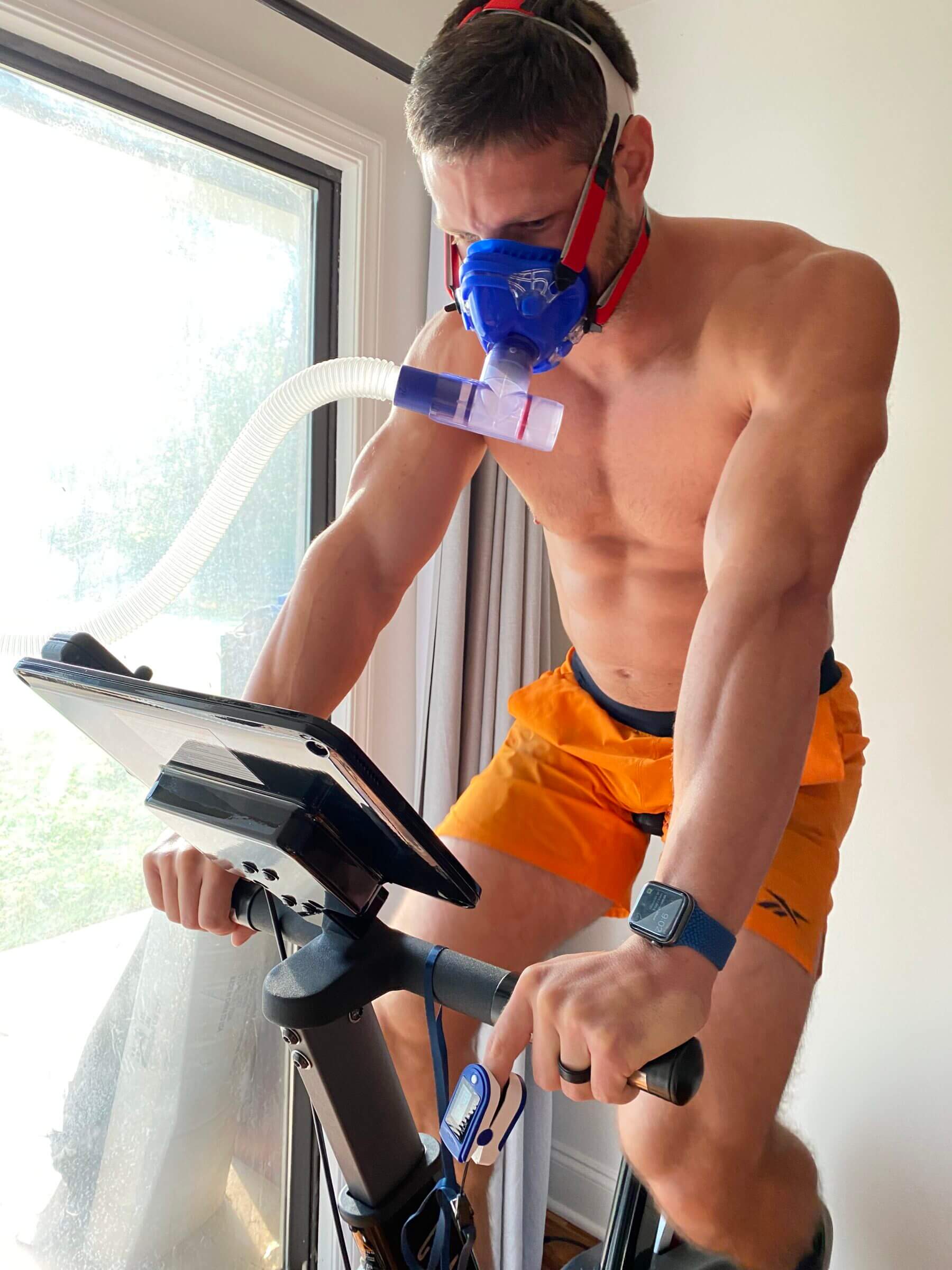
The principle idea behind intermittent hypoxic training is that it can improve the function of your mitochondria, which are the parts of each cell that are responsible for converting food into energy.
Less than optimally functioning mitochondria — or, in a worst-case scenario, dysfunctional mitochondria — can lead to a host of issues, including the progression of cancer, cell death, chronic fatigue (and chronic diseases in general), and a variety of other ailments.
Additionally, mitochondrial dysfunction is a hallmark sign of aging, as I explained in my article about how to slow down the aging process.
As a result, I try to do everything I can to keep the billions of mitochondria in my body happy.
Oxygen deprivation training does exactly that: it helps my body utilize oxygen more efficiently so that it works better under less-than-ideal circumstances, such as when my oxygen demands outpace the supply — like in high-altitude situations, during and after intense exercise, or when my body is battling inflammation or disease.
Scientists have even discovered that intermittent hypoxic training can improve the prognosis of patients who suffer from long-term side effects after contracting certain upper respiratory infections.
While scientists don’t yet have a full grasp on all the various mechanisms of how training under hypoxic conditions positively impacts the body, there is one mechanism that’s fairly well understood: during hypoxic training, you have less oxygen than required to function optimally. As a result, your nervous system causes your systemic blood vessels to dilate in an attempt to increase oxygenated blood flow to your vital organs and other tissue.
If you regularly expose your body to low oxygen conditions, your body will eventually make more red blood cells to increase your oxygen-carrying capability and to be better prepared for the next hypoxic episode.
When that happens, you’ll likely notice a higher resting heart rate and increased blood pressure, because your heart has to work harder to pump the increased blood volume throughout your circulatory system.
The good news is that your body will adapt to that “stressor” by creating new blood vessels — a process called angiogenesis.
A study involving 20 healthy participants confirmed that hypoxia triggered an increase in blood vessel and peripheral capillary density as well as the “recruitment of microvessels of the central and peripheral microcirculation” due to “compensatory mechanisms to ensure adequate tissue oxygenation.”
It takes approximately six weeks of hypoxic training for the body to adapt and trigger angiogenesis.
The more blood vessels your body has, the more nutrients and oxygen it can carry to supply your mitochondria, allowing them to create more energy at peak performance. That triggers downstream benefits, such as improved immune system and brain function, as well as increased athletic performance.
Based on my research, here is a list of the top 10 benefits associated with intermittent hypoxic training:
- Boosts the immune system.
- Flushes metabolic waste out of tissue (detoxification) to promote healing.
- Helps treat chronic fatigue and brain fog.
- Increases red blood cell count.
- Improves endurance performance and muscle recovery.
- Increases oxygenated blood flow to the brain and other organs.
- Reduces alcohol withdrawal stress.
- Slows down cognitive decline in patients with Alzheimer’s and other brain disorders.
- Speeds up recovery after respiratory infections.
- Triggers the creation of new blood vessels.
So let’s talk about the effects of intermittent hypoxic training and look at the available scientific evidence.
1. Boosts the Immune System
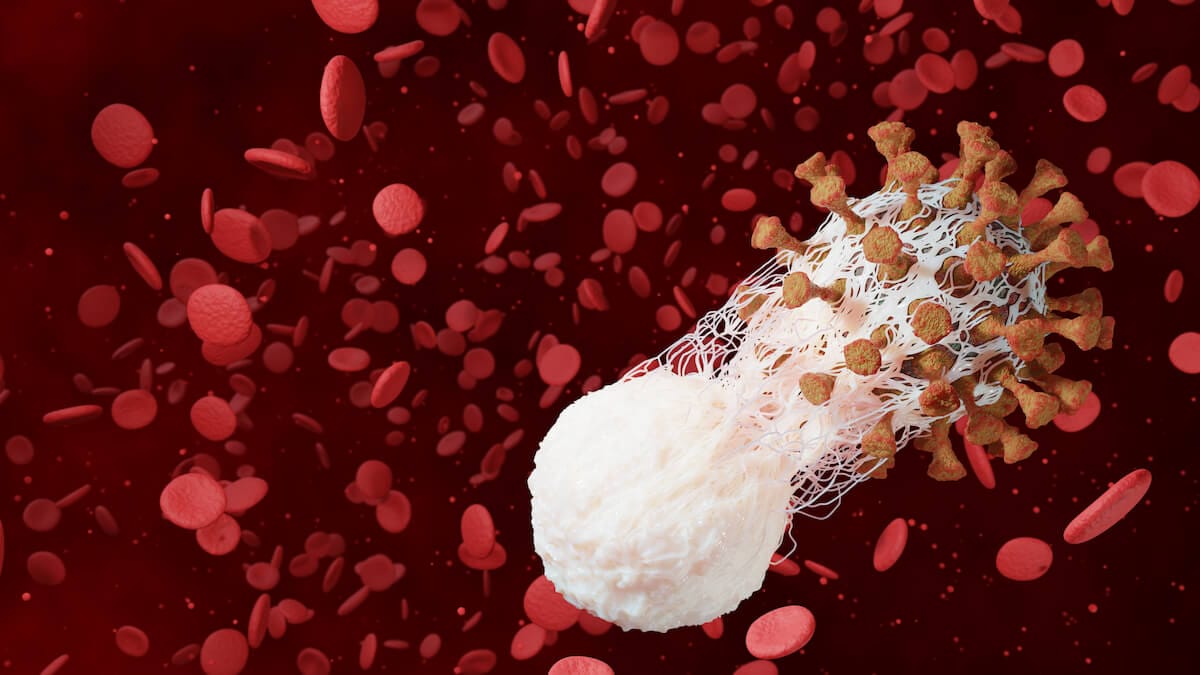
Hypoxia is acute stress for the body that triggers an immediate inflammatory response and the release of inflammatory cytokines. When that happens, phagocytic cells get activated and start gobbling up harmful particles, bacteria and dead or dying cells. In turn, that triggers a cascading and innate immune response that can help you fight off pathogens that might be lingering in your body.
I recently contracted a regular but relatively persistent cold that stuck around for several weeks and manifested mostly in congested sinuses and a mild cough. Since that happened over the holidays, I decided to take a break from my regular fitness routine, including CrossFit and altitude training, and relax instead.
When I couldn’t seem to get rid of my congested sinuses, I decided to give my immune system a little nudge and, for a few days in a row, I spent 25 minutes on my exercise bike inhaling 10% oxygen, followed by three minutes on the bike while inhaling 90% oxygen. After two or three days, all the signs of my cold were gone.
Obviously, I can’t prove definitively that intermittent hypoxic training was the cause for my sudden recovery, but the science suggests that my upregulated immune system played a role.
2. Detoxification

Unlike what you may have heard, you don’t need juice cleanses to detox your body. Instead, the liver, kidneys and lungs constantly remove metabolic waste from your bloodstream.
However, in some cases, that metabolic waste can accumulate in your cardiovascular and lymphatic systems — especially in areas that don’t get sufficient blood flow.
Intermittent hypoxic training increases blood flow by dilating blood vessels (see below) and it allows the lungs to engage the thoracic duct, which plays a vital role in lymph drainage.
Both mechanisms combined help flush out metabolic waste and thus support the body’s innate detoxification capabilities.
3. Helps Treat Chronic Fatigue and Fibromyalgia

Studies have implicated mitochondrial dysfunction as the immediate cause of chronic fatigue syndrome (CFS) symptoms, and scientists such as David Bell, M.D. (one of the leading experts in the area of CFS research) think that cellular hypoxia could be the underlying cause of that dysfunction.
Symptoms of chronic fatigue syndrome include extreme fatigue, brain fog, headaches, muscle and joint pain, sore throat and more.
There are several other conditions, such as fibromyalgia, that also manifest with a decrease in microcirculation and cellular hypoxia. Specifically, studies have shown that patients who suffer from fibromyalgia show alterations in muscle oxygen utilization that can lead to pain and excessive muscle fatigue, especially after exercise.
A meta-analysis from 2019 analyzed the available research on a special form of oxygen training (hyperbaric oxygen therapy) and aerobic exercise in the long-term treatment of fibromyalgia and concluded that the evidence looks promising, though more research is needed to fully understand all the involved mechanisms and best treatment protocols.
While hyperbaric oxygen therapy and intermittent hypoxic training aren’t exactly the same (the former uses 100% oxygen and increased ambient air pressure), both methods increase circulation and oxygenation.
4. Increases Red Blood Cell Count
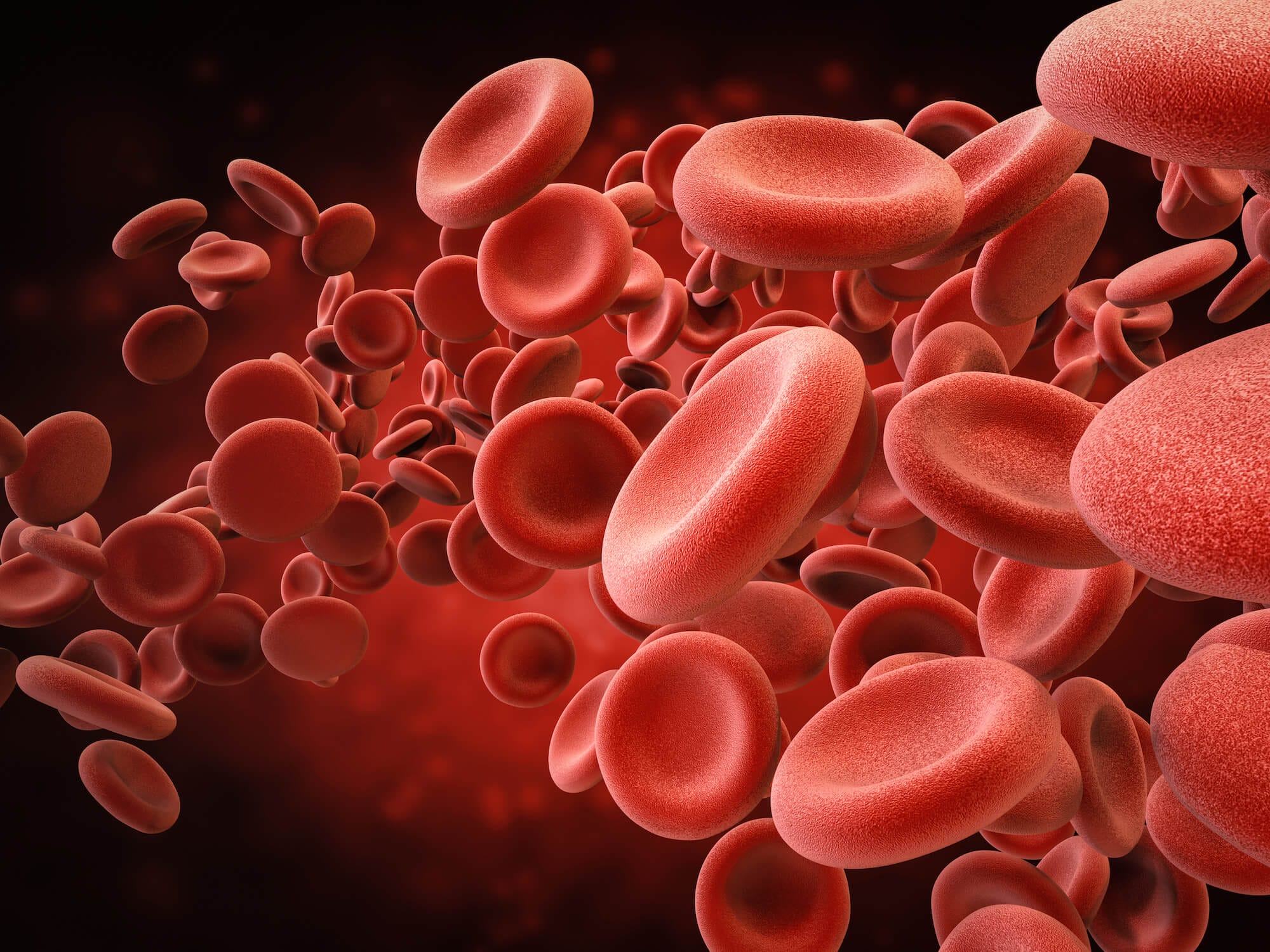
Arguably one of the most well-understood benefits of intermittent hypoxic training is how it increases the number of red blood cells (RBC).
The mechanism behind this is fairly simple: the kidneys respond to hypoxic training by releasing the glycoprotein hormone erythropoietin (EPO) that counteracts tissue hypoxia. In turn, EPO helps make red blood cells, and having more of those raises your hemoglobin levels.
Hemoglobin is a protein in your red blood cells that carries oxygen, which plays an important role in aerobic exercise performance (see below).
I experienced an increase in my red blood cell count, hemoglobin and hematocrit (the proportion of red blood cells in the bloodstream) after just two weeks of intermittent hypoxic training using the LiveO2 Extreme system, as reflected in the table below. (Read my LiveO2 review for more details.)
Note that I started intermittent hypoxic training on October 14th, 2021, and unfortunately did not take blood measurements on that date. However, considering that I did not make any other changes that could influence my blood markers between June and November (the dates reflected in the table), I attribute the improvements to intermittent hypoxic training.
| June 2021 | November 2021 | |
|---|---|---|
| Red blood cell count | 4.73 | 5.88 |
| Hematocrit | 42.4 | 52.6 |
| Hemoglobin | 14.2 | 17.1 |
5. Improves Aerobic Exercise Performance
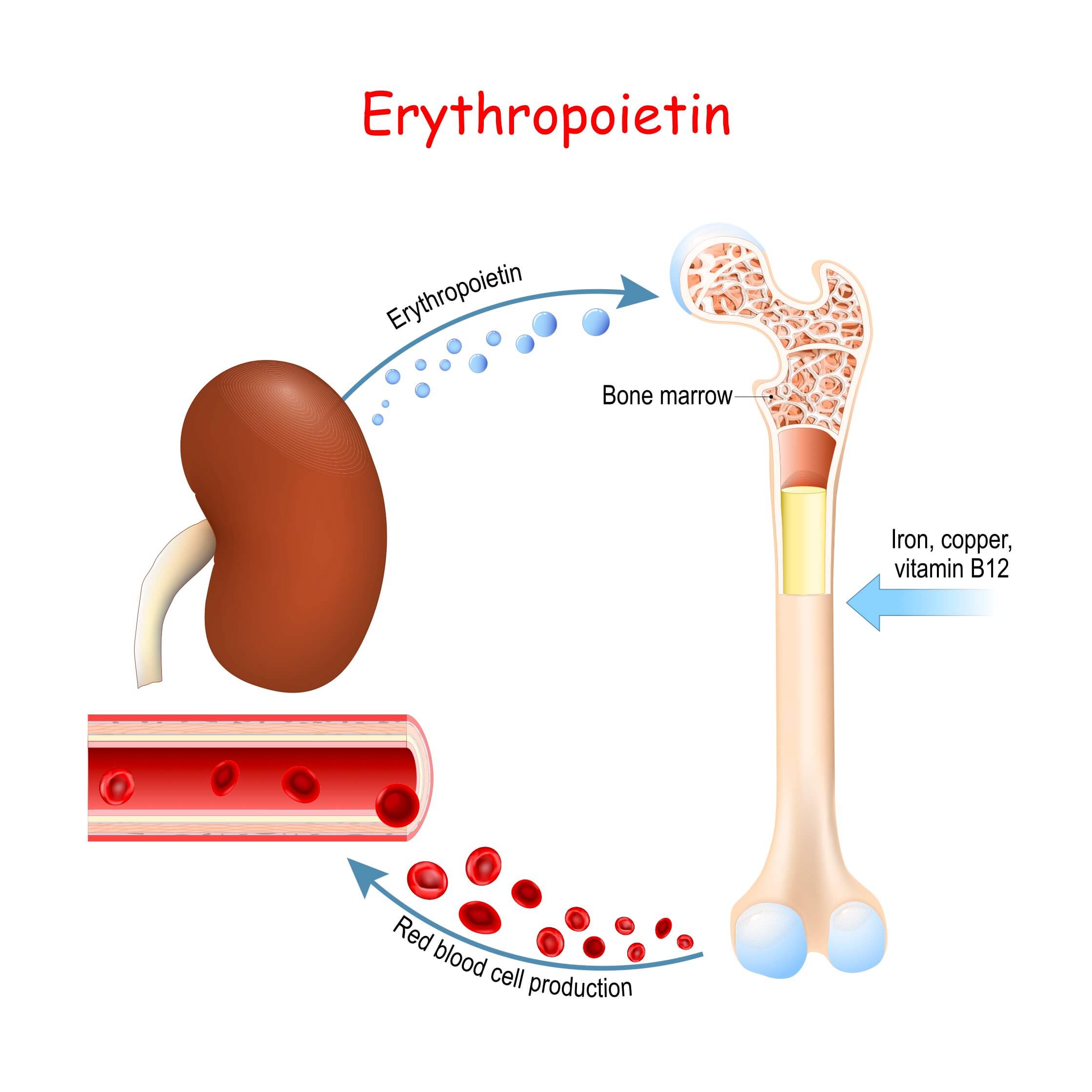
As noted in the previous section, erythropoietin (EPO) is a powerful hormone that helps your body make new red blood cells. That’s why EPO is used in patients with anemia, and why professional athletes have used EPO to improve aerobic performance at sea level — especially in endurance sports such as cycling.
If you’re a professional athlete and want to improve your aerobic performance without having to use banned substances (such as EPO injections), both altitude and intermittent hypoxic training are excellent ways of doing that. In fact, several studies have shown that intermittent hypoxic training enhances exercise economy and aerobic exercise performance in swimmers as well as in cyclists.
However, it’s worth noting that the improvements you can expect vary based on your fitness level, how long you conduct the training, and your exercise intensity.
Based on the research I’ve read, it takes six or more weeks for your body to fully adapt to hypoxic training. Plus, you get the most benefits when exercising at your lactate threshold (which is the intensity at which the blood’s concentration of lactate and/or lactic acid begins to increase rapidly).
It’s also worth noting that you’ll likely experience the most significant improvements in athletic performance the less fit you are. In other words, a hobby athlete may see performance improvements in the range of 15-25%, whereas an elite athlete will likely see improvements in the range of 1-3%. But the latter can make a difference between winning or losing a race.
Another key element to improving physical performance is adequate recovery. In other words, the faster you recover after an intense workout or competition, the sooner you can push yourself hard again.
One of the key factors in muscle recovery after intense workouts or injury is ensuring adequate oxygenated blood flow.
That’s the reason why some professional sports teams, including the Tampa Bay Buccaneers and Arizona Cardinals, use hypoxic training as part of their recovery efforts.
It’s also the reason why I’ve been using the Theragun (a percussion massage gun), infrared saunas, ice baths and PowerDot (an electric muscle stimulation device). While all of these gadgets can increase blood flow in the targeted areas, intermittent hypoxic training offers a more systematic approach by effectively treating every tissue in the body, including organs.
When I cycle back and forth between hypoxic (low oxygen) and hyperoxic (high oxygen) air during my endurance training sessions, I can feel the effects from head to toe.
That’s why I leverage intermittent hypoxic training not only for the sake of improving my aerobic performance but also to help my body recover from high-intensity workouts.
My training regimen includes both high-intensity interval training (HIIT) and reduced-exertion high-intensity interval training (REHIT), and I’ve noticed a significant improvement in my cycling and CrossFit performance, as well as shorter recovery times, thanks to the inclusion of intermittent hypoxic training.
6. Increases Blood Flow
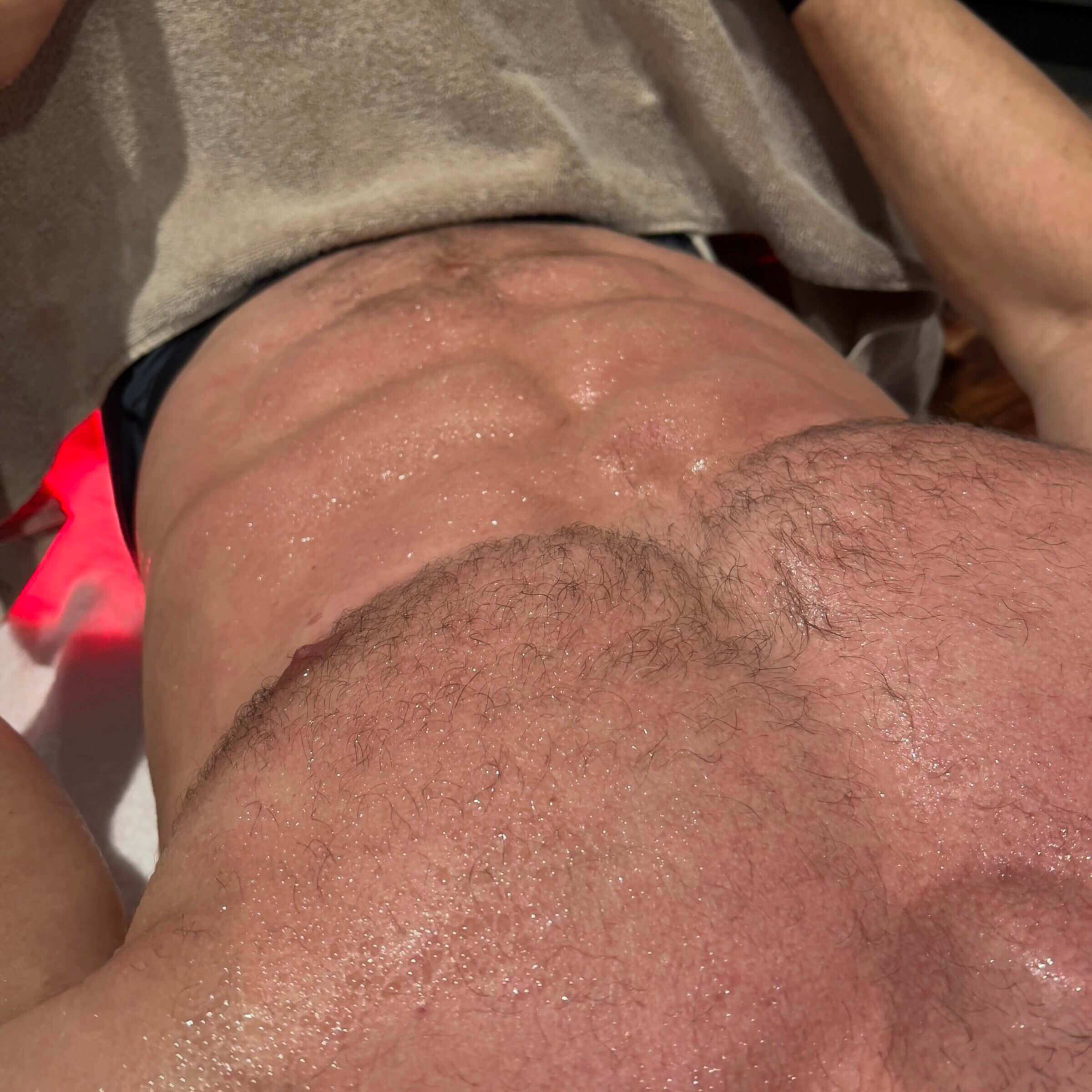
As indicated earlier in this article, intermittent hypoxia causes the dilation of blood vessels (vasodilation), which increases blood flow and oxygen supply to vital organs.
Additionally, vasodilation in the capillaries (a network of small blood vessels in your body) allows oxygen-rich red blood cells to pass through and deliver oxygen to tissue that might otherwise remain undersupplied.
The latter is particularly common in people who suffer from chronic inflammation caused by an inappropriate lifestyle that might include processed foods, inadequate sleep, a lack of exercise, smoking and similar factors.
Chronic inflammation goes hand-in-hand with many metabolic diseases, including cardiovascular disease, cancer, stroke, Type 2 diabetes, Alzheimer’s and more.
One of the reasons why certain regions of your body might experience reduced blood flow is endothelial capillary inflammation, a condition that narrows the diameter of capillaries below the threshold required for oxygen-rich red blood cells to pass through.
Intermittent hypoxic training can counter those inflammatory processes by increasing oxygenated blood flow and amplifying the effects that appropriate lifestyle changes can have in lowering your risk of developing metabolic disease.
7. Reduces Alcohol Withdrawal Stress
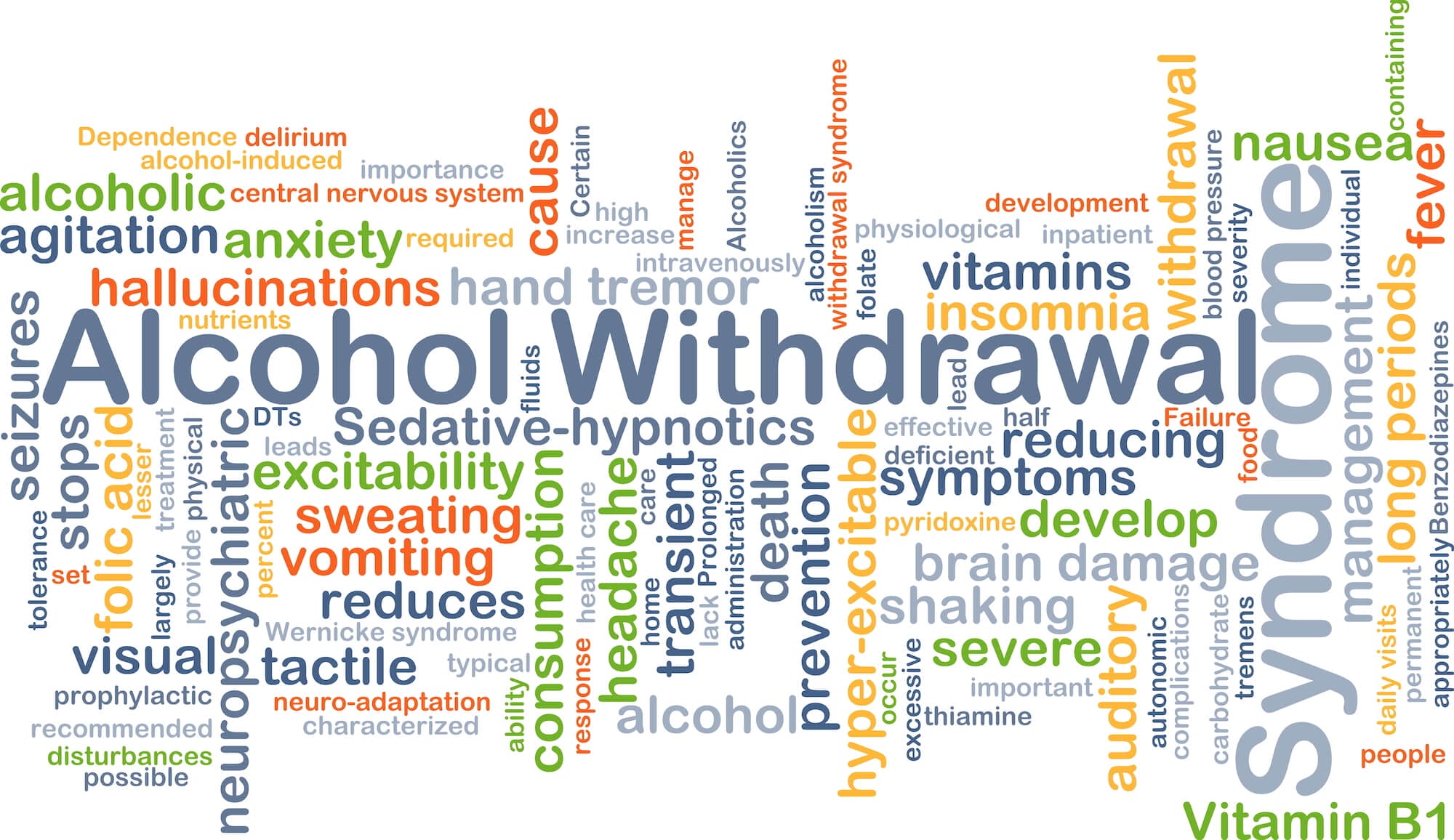
During my research for this article, I stumbled across a rather surprising benefit of intermittent hypoxic training: the reduction of alcohol withdrawal stress.
More specifically, ethanol intoxication and withdrawal have severely-damaging effects on the central nervous system by causing oxidative stress, ATP depletion, and cell death in the brain.
A 2017 study that was published in Respiratory Physiology & Neurobiology concluded that, “Although severe hypoxia sufficient to impair ATP production is certainly detrimental to the brain, moderate and/or brief reductions in O2 supply may elicit adaptations that serve to increase the brain’s resistance to more severe insults, particularly ischemia and alcohol withdrawal.”
The mechanism behind the neuroprotective effects of intermittent hypoxia are fairly complex. But in a nutshell, cycling between hypoxia and normoxic air triggers the formation of reactive oxygen species (ROS), a messenger molecule that contains oxygen. That, in turn, activates the expression of “defense enzymes that collectively afford powerful antioxidant and anti-inflammatory cytoprotection.”
8. Slows Down Cognitive Decline
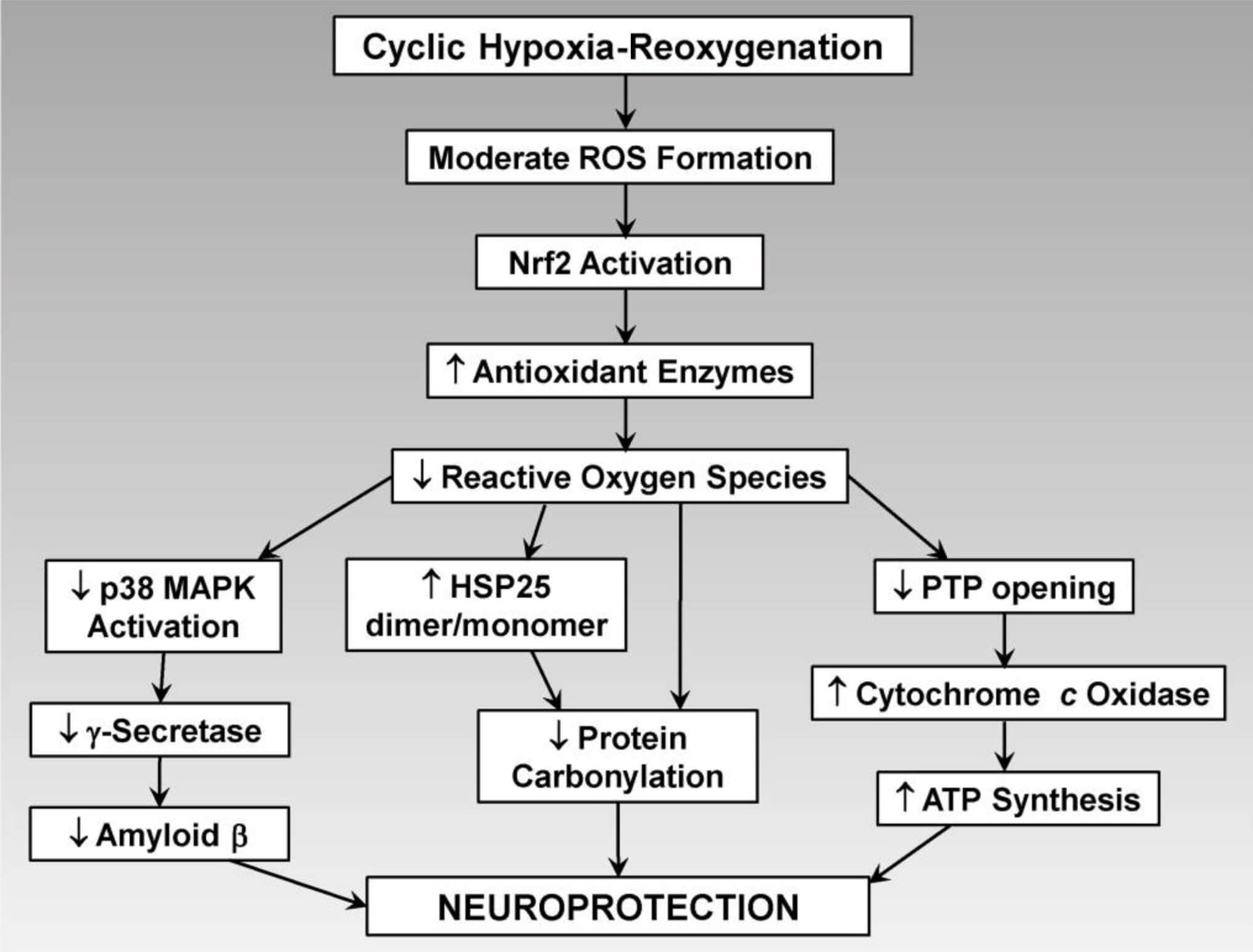
Alzheimer’s is among the leading causes of death in the United States, affecting over 6 million Americans as of 2021 — and that number doubles every five years among people 65 years or older.
Alzheimer’s is a neurodegenerative disease that is likely triggered by insulin resistance in the brain. That’s why Alzheimer’s is often referred to as Type 3 diabetes.
Besides adopting a species-appropriate diet that’s free from processed junk food and industrial seed oils and making healthy lifestyle choices, scientists have discovered that intermittent hypoxia training also offers neuroprotective benefits in patients with Alzheimer’s disease.
9. Speeds Up Recovery After Respiratory Infections
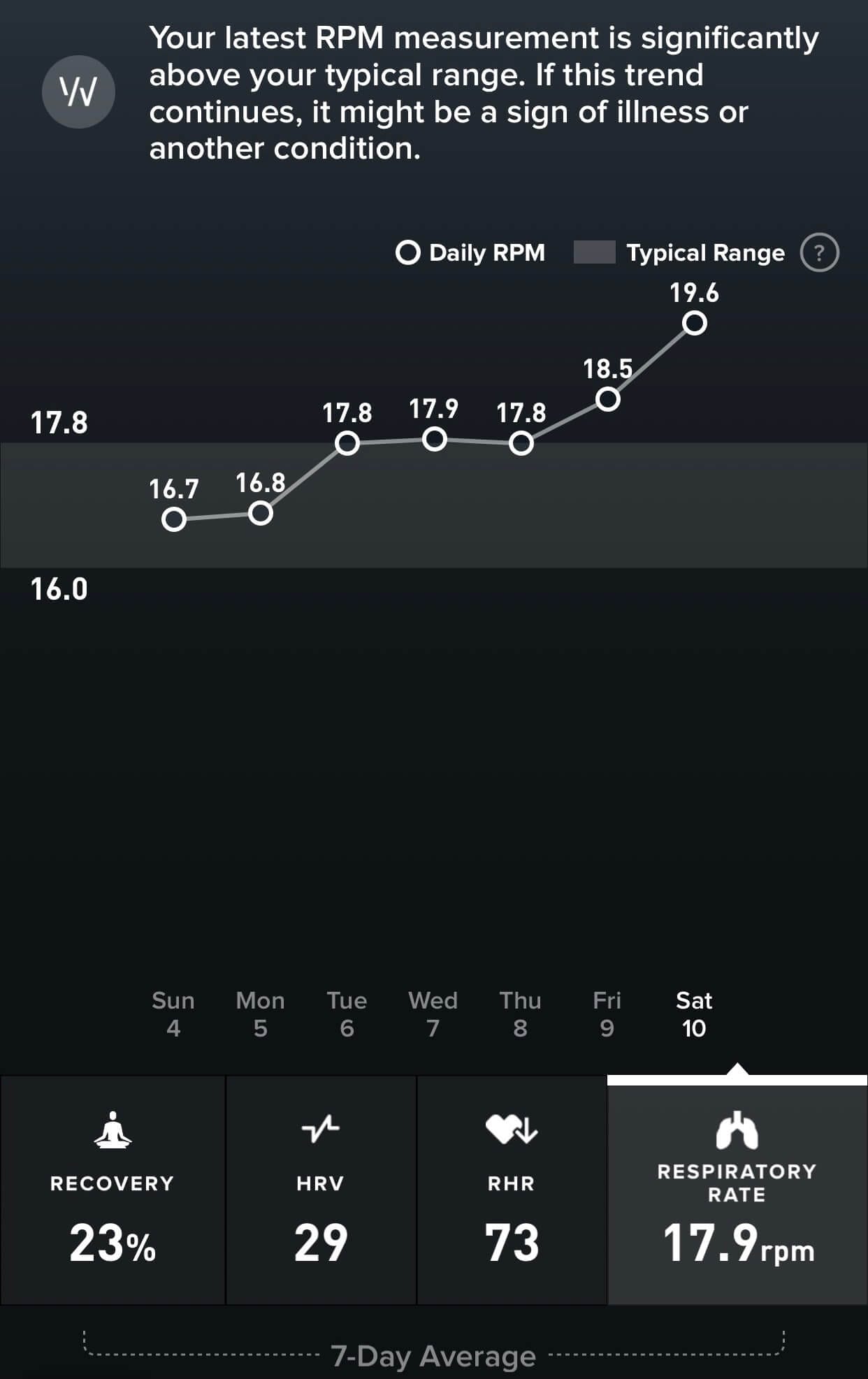
Certain respiratory infections, such as SARS and MERS, can cause shortness of breath (dyspnea), pneumonia and other cardiopulmonary issues. In some patients, these side effects can last for weeks or months, making it difficult to resume a normal life.
In 2021, researchers published a study in Frontiers of Pharmacology describing the benefits of intermittent hypoxic training (which it refers to as intermittent hypoxic preconditioning or IHP). Specifically, the researchers concluded that IHP “can improve the cardiopulmonary function of patients and increase the cardiorespiratory fitness and the tolerance of tissues and organs to ischemia.”
The same study also mentioned how IHP has been successfully used in patients with chronic obstructive pulmonary disease (COPD), diabetes, coronary heart disease, heart failure, hypertension and other diseases.
The underlying mechanism of intermittent hypoxic training in patients with respiratory infections is a combination of reducing the occurrence of chronic hypoxia, increasing tissue oxygen saturation, reducing occurrences of shortness of breath, and balancing the immune system to prevent organ damage caused by the attack of healthy cells by a dysfunctioning immune system (cytokine storm).
10. Triggers the Creation of New Blood Vessels
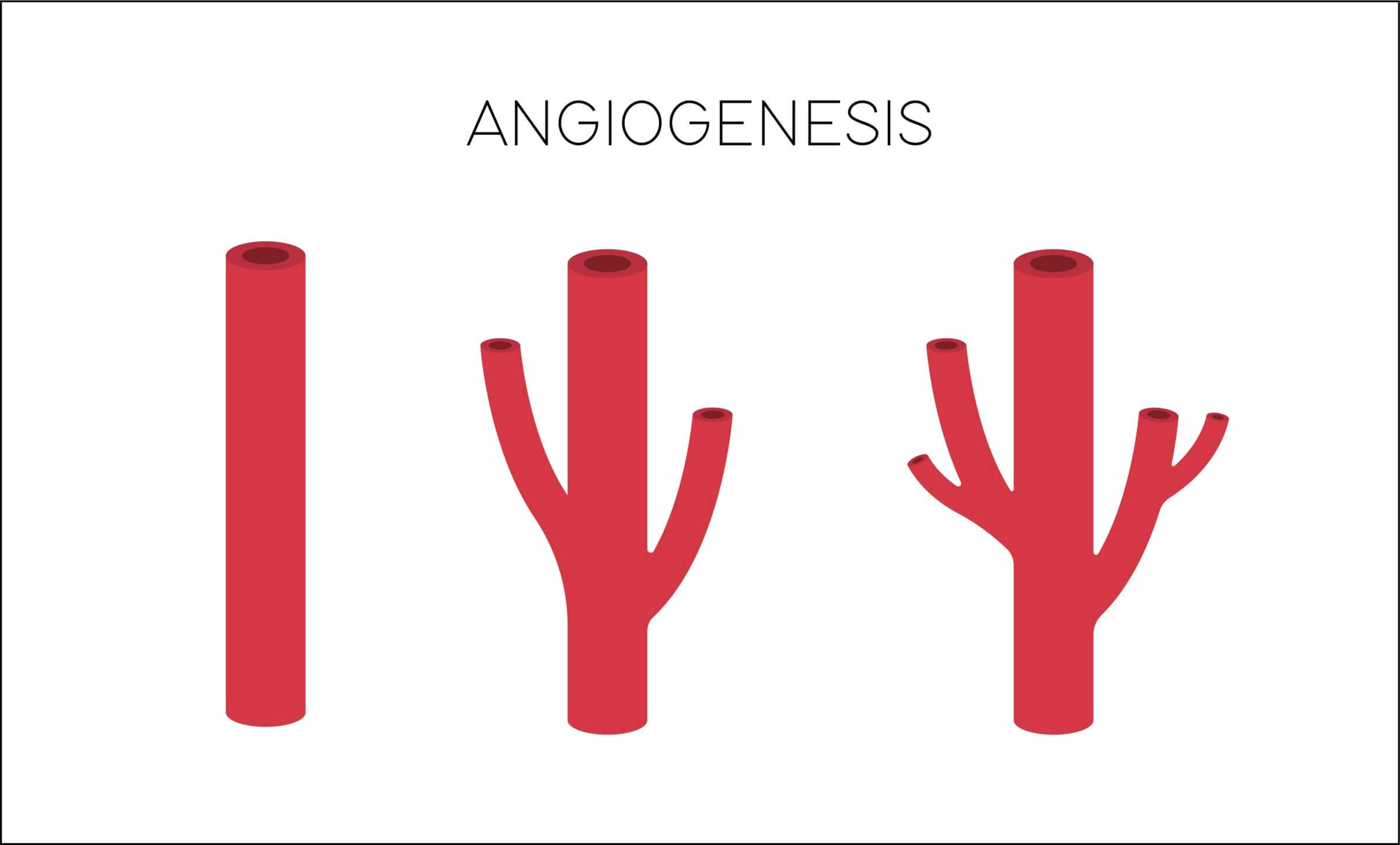
When the body is confronted with an increase in blood volume and red blood cells, it compensates with the creation of new blood vessels — a process called angiogenesis.
Increasing the capacity of the circulatory system means that more oxygen and nutrients can reach vital organs and other parts of the body. That’s crucial for growth and development as well as for the healing of wounds.
Increasing your oxygen-carrying capability also improves endurance and aerobic performance, because the more oxygen your cells have at their disposal, the more energy (in the form of adenosine triphosphate or ATP) they can produce.
Is Intermittent Hypoxic Training Safe?
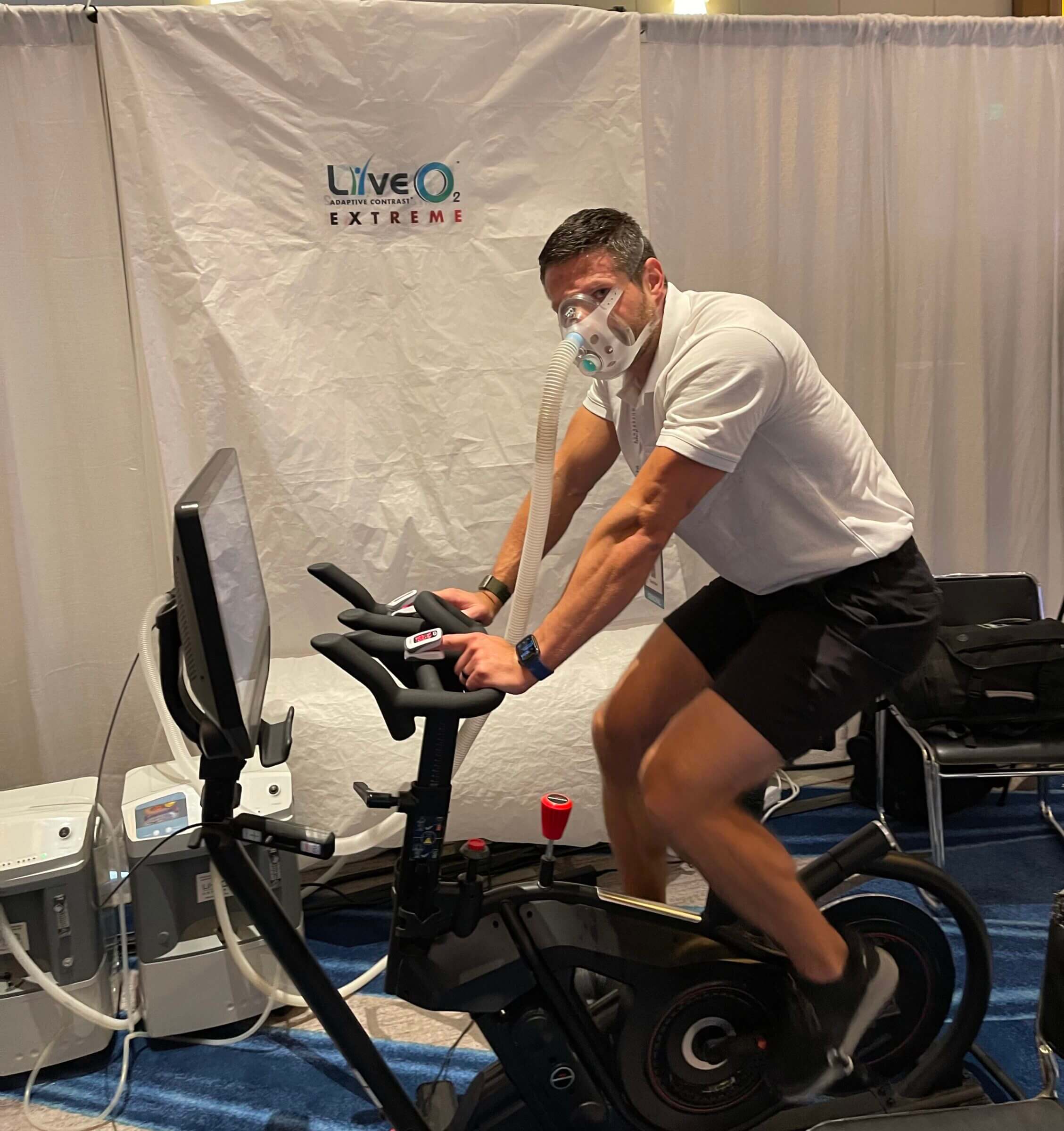
Intermittent hypoxic training is generally safe if done correctly and under the supervision of a knowledgeable health professional. However, possible side effects include passing out during a training session, anemia, and a loss of muscle mass. That’s why I make sure to consume enough foods that are rich in easy-to-absorb heme iron, including red meat and freeze-dried beef liver.
Additionally, you may also experience a short-term increase in blood viscosity, which can cause an increase in blood pressure and resting heart rate.
As a side note, increasing your water intake doesn’t help with reducing blood viscosity or blood pressure. In fact, drinking too much water can negatively impact those biometrics. So hydrate sufficiently but don’t overdo it.
To judge whether or not I’m drinking enough water, I keep an eye on my urine. If it’s clear, I’m good and I maintain my normal fluid intake instead of chugging down gallons of water. If it starts turning dark yellow, I know I need to drink more water.
The Role of Hypoxia in Cancer Proliferation
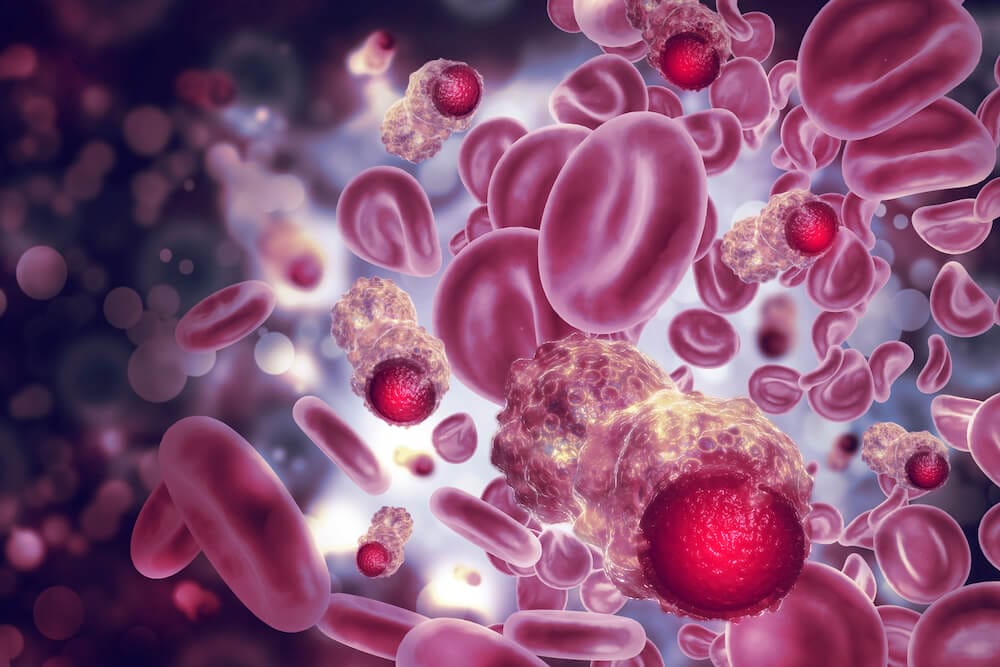
Another interesting thing I discovered during the research for this article is the role of hypoxia in the proliferation of cancer and metastasis.
Based on the research I’ve seen, cancer cells appear to thrive in hypoxic conditions. That’s interesting, because cell proliferation usually decreases under low oxygen conditions as more cells require more oxygen, thus exacerbating the hypoxic stress.
But certain cancer cells show enhanced metastatic capacity under low-oxygen conditions.
This information made me hypothesize that increasing oxygen saturation through the body (including cancer cells) by leveraging intermittent hypoxic training, may slow down their proliferation.
Needless to say, I’m not a doctor or cancer researcher, so don’t skip your next chemotherapy treatment in favor of an intermittent hypoxic training session. However, if you have been diagnosed with cancer, I’d definitely have a serious conversation about hypoxic training with your doctor.
When you do, you might also want to mention a ketogenic diet, considering that cancer cells require a lot of glucose to thrive. Cutting out carbohydrates limits the number of carbs your body (and cancer) can use for fuel.
Intermittent Hypoxic Training vs. Altitude Training

Altitude training is an umbrella term that covers different mechanisms to achieve the same or similar benefits. For example, many Olympic athletes train in mountainous areas at high altitude to improve their athletic performance at normal altitudes.
Additionally, altitude training could also mean training at sea level but living (and sleeping) at altitude. Both of these techniques have certain benefits, including an increase in red blood cells and enabling the body to become more efficient at utilizing oxygen.
For example, mountain climbers also use this type of training to allow their bodies to better cope with the low oxygen conditions at altitude and to avoid altitude sickness.
Intermittent hypoxic training is different in that it allows you to switch back and forth between normal and reduced oxygen levels (but within a single session). In other words, you cycle back and forth between normoxic and hypoxic conditions more frequently than you would with traditional altitude training.
Additionally, there is a special IHT protocol that includes cycling back and forth between hypoxic and hyperoxic conditions, something that isn’t part of any altitude training protocol I’m familiar with.
How Altitude Training Has Positively Impacted My Body and Mind

| Intermittent Hypoxic Training | Altitude Training | |
|---|---|---|
| Requires sleeping or training at altitude | ✘ | ✔ |
| Improves aerobic exercise performance | ✔ | ✔ |
| Boosts the immune system | ✔ | ✘ |
| Reduces alcohol withdrawal stress | ✔ | ✘ |
| Increases blood flow | ✔ | ✔ |
| Reduces inflammation | ✔ | ✘ |
| Speeds up recovery after respiratory infections | ✔ | ✘ |
| Detoxification | ✔ | ✘ |
| Helps treat chronic fatigue and fibromyalgia | ✔ | ✘ |
| Increases red blood cell count | ✔ | ✔ |
| Slows down cognitive decline | ✔ | ✘ |
| Triggers the creation of new blood vessels | ✔ | ✔ |
To find out if my body would react differently to sleeping at altitude as opposed to intermittent hypoxic training, I teamed up with Jon Jonis from Mountain Air Health, who was kind enough to loan me one of their oxygen tents for six weeks.
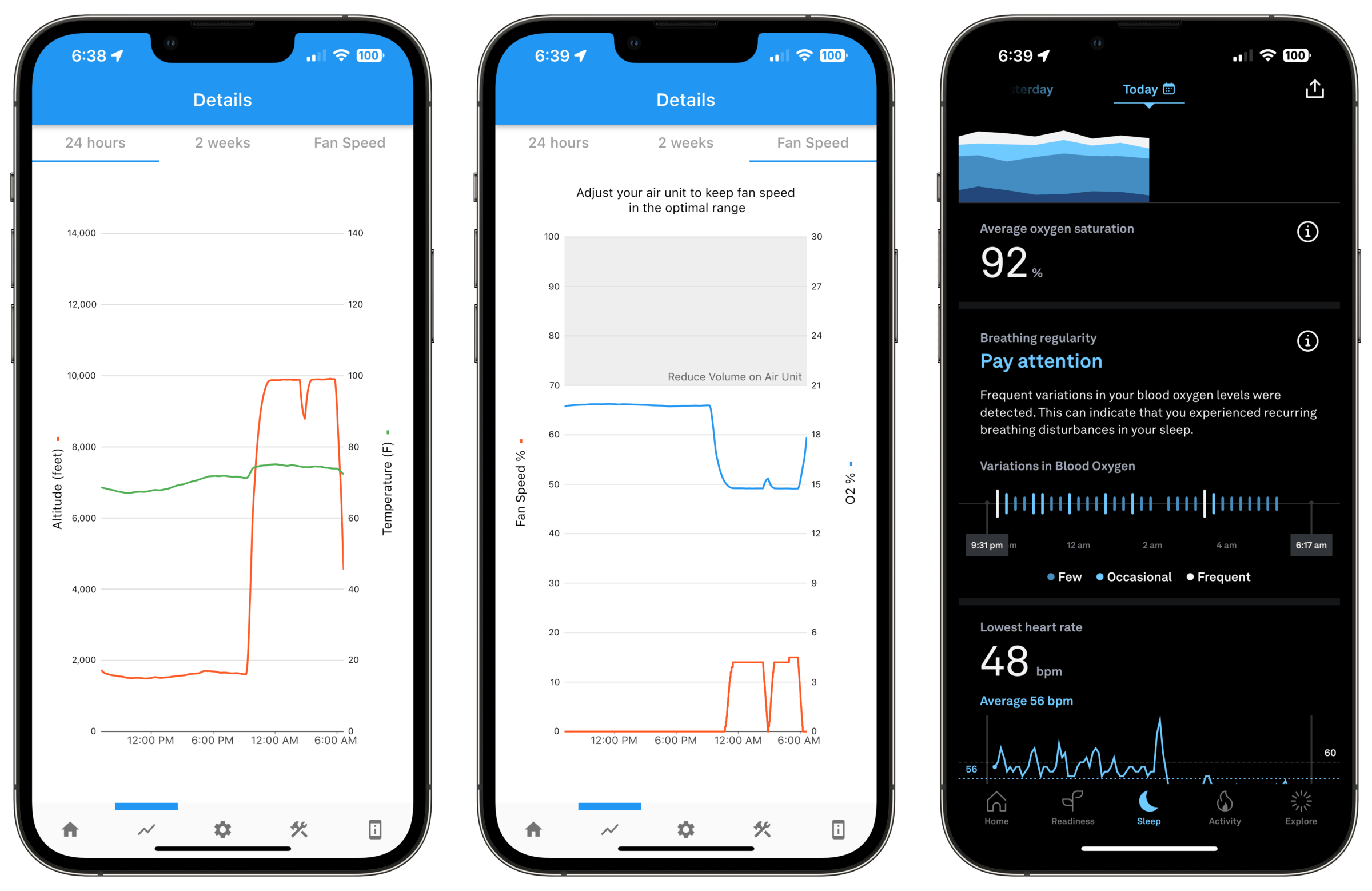
To find out exactly how my blood markers would change after having slept in a tent with only 15% oxygen for six weeks, I did a comprehensive blood panel after the test so I could compare the numbers to my baseline. Here are the results:
| Blood Marker | Baseline | After Six Weeks In Tent | Change |
|---|---|---|---|
| Red blood cell count | 5.06 | 5.08 | 0.4% |
| Hemoglobin | 15.2 | 15.6 | 2.6% |
| Hematocrit | 42.4 | 49.3 | 16.3% |
As you can see in the table above, sleeping at altitude measurably increased my blood markers as related to cardiovascular fitness.
However, I should also point out that those aren’t the highest numbers I’ve recorded. In fact, just a few months ago, my blood work came back with much higher numbers (6.89, 5.13 and 50.7, respectively) and I don’t know for sure what triggered that increase.
The bottom line is that both IHT and altitude training are effective tools for improving your aerobic capacity, and which method is best for you depends on your individual circumstances and goals.
Considering that I’m not a professional athlete and have no aspirations to climb Mount Everest anytime soon, I’ll stick to IHT, which is more convenient than sleeping at (or simulating sleeping at) altitude.
Frequently Asked Questions
Unless you have access to a medical facility or are part of a professional sports team, I recommend checking out LiveO2. It’s an altitude simulation system that you can use in combination with a stationary exercise bike, a rowing machine or a treadmill to exercise under low oxygen conditions.
In fact, the system I have allows me to switch back and forth between low oxygen air (as low as 10%) and high oxygen air (90% oxygen). You can learn more about the benefits of such high-contrast systems in my hands-on LiveO2 review.
I use LiveO2 Extreme to conduct interval hypoxic training (IHT training). You can learn more about the IHT modalities I use in this LiveO2 review, but in a nutshell, I leverage repeated sprint training combined with normobaric hypoxia (meaning low oxygen under normal air pressure conditions) to increase blood flow, improve athletic performance and recover better after intense CrossFit workouts.
No. Some people use the term “hypoxic training” when they actually mean “airflow restriction training,” which involves using special masks (that restrict airflow), mouth taping, or mouthguards that force you to breathe through your nose.
In the past, I’ve tried taping my mouth shut as well and wearing a special mouthguard during intense workouts. Both approaches forced me to breathe through my nose and limited the amount of oxygen that could reach my lungs. This type of training was difficult, and it certainly helped me become efficient with my nasal breathing. However, it did not produce any changes in my red blood cell count.
So while I’m a fan of leveraging airflow restriction techniques during exercise, I don’t think it’s quite as effective as breathing air that contains less than normal amounts of oxygen (hypoxic air).
The “living high, training low” approach is a method used by some elite endurance athletes to improve their athletic performance. It involves living (and sleeping) at higher altitudes while training at lower altitudes or sea level. In a sense, it’s a variation of altitude training that speeds up the acclimatization and physiological adaptations to the low oxygen concentrations at high altitudes.
The reason why some endurance athletes prefer to train at sea level is that they can train at much higher intensities than would be possible at altitude. For example, I can tell that during intermittent hypoxic exposure (from my sprints on CAROL) my performance suffers. In other words, I can’t maintain the same exercise intensity as I can while breathing room air (normoxia).
I have not seen any scientific evidence that suggests altitude training improves anaerobic performance. That makes sense considering that there is no oxygen involved in anaerobic energy pathways (hence its name).
Altitude training is considered legal doping, so you won’t get banned for doing it. However, if you’re a professional athlete who competes in sanctioned competitions, I recommend checking with your national anti-doping agency and being prepared to explain how you obtained higher-than-normal hemoglobin and hematocrit levels.
Altitude sickness is triggered by a rapid decline in air pressure and air oxygen levels at higher altitudes. By allowing your body to adapt to lower oxygen levels (using the methods outlined in this article), you can decrease the chances of developing altitude sickness, or at least lessen your symptoms.
If you want to prepare yourself for an upcoming hike at altitude, I recommend checking out this podcast with Dr. Rich Berkowitz, a chiropractor from North Carolina who used the same LiveO2 system I have to prepare for a trek to Mount Everest base camp.
Yes, the benefits of altitude training do not last forever. Physiological adaptation goes both ways, and altitude training is no different than strength training, for example.
The Benefits of Intermittent Hypoxic Training: Summary and Final Thoughts
One of the most effective ways to improve your health and well-being is to expose your body to things that make you physiologically uncomfortable. Examples include intermittent fasting, high-intensity exercise, cold water bathing, sauna bathing and intermittent hypoxic training.
Early humans and our Paleolithic ancestors didn’t have to worry about finding opportunities to do these things. They were often forced to go without food, or to endure dramatic changes in temperatures or less-than-ideal oxygen levels.
In contrast, most modern humans live a comfortable life with 24/7 access to food, clothing and climate-controlled homes. When we do have to skip a meal, push ourselves to the limit during a workout, abstain from carbs for a day or take a cold shower because of a power outage, we freak out because our bodies aren’t used to it.
The results of this mismatch between our genetic code and this modern world that poses very few physical demands on our bodies are skyrocketing rates of chronic disease, out of control death rates due to largely preventable and self-inflicted ailments (e.g., Type 2 diabetes, heart disease and Alzheimer’s) and an overall deterioration of our health.
Studies have shown that intermittent hypoxic training is beneficial for improving blood circulation (especially in the brain), boosting your immune system, helping with recovery after injuries and after respiratory infections, decreasing inflammation and much more.
I consider intermittent hypoxic an excellent tool to expose my body to physiological stress in a controlled manner with the purpose of allowing it to adapt and become stronger.
While I have no plans to climb Mount Everest or to participate in the Tour de France, I continue training under low-oxygen conditions for the purposes of improving blood flow, supporting my immune system and speeding up recovery after intense workouts.

Michael Kummer is a healthy living enthusiast and CrossFit athlete whose goal is to help people achieve optimal health by bridging the gap between ancestral living and the demands of modern society.
Medical Disclaimer
The information shared on this blog is for educational purposes only, is not a substitute for the advice of medical doctors or registered dieticians (which we are not) and should not be used to prevent, diagnose, or treat any condition. Consult with a physician before starting a fitness regimen, adding supplements to your diet, or making other changes that may affect your medications, treatment plan or overall health. MichaelKummer.com and its owner MK Media Group, LLC are not liable for how you use and implement the information shared here, which is based on the opinions of the authors formed after engaging in personal use and research. We recommend products, services, or programs and are sometimes compensated for doing so as affiliates. Please read our Terms and Conditions for further information, including our privacy policy.
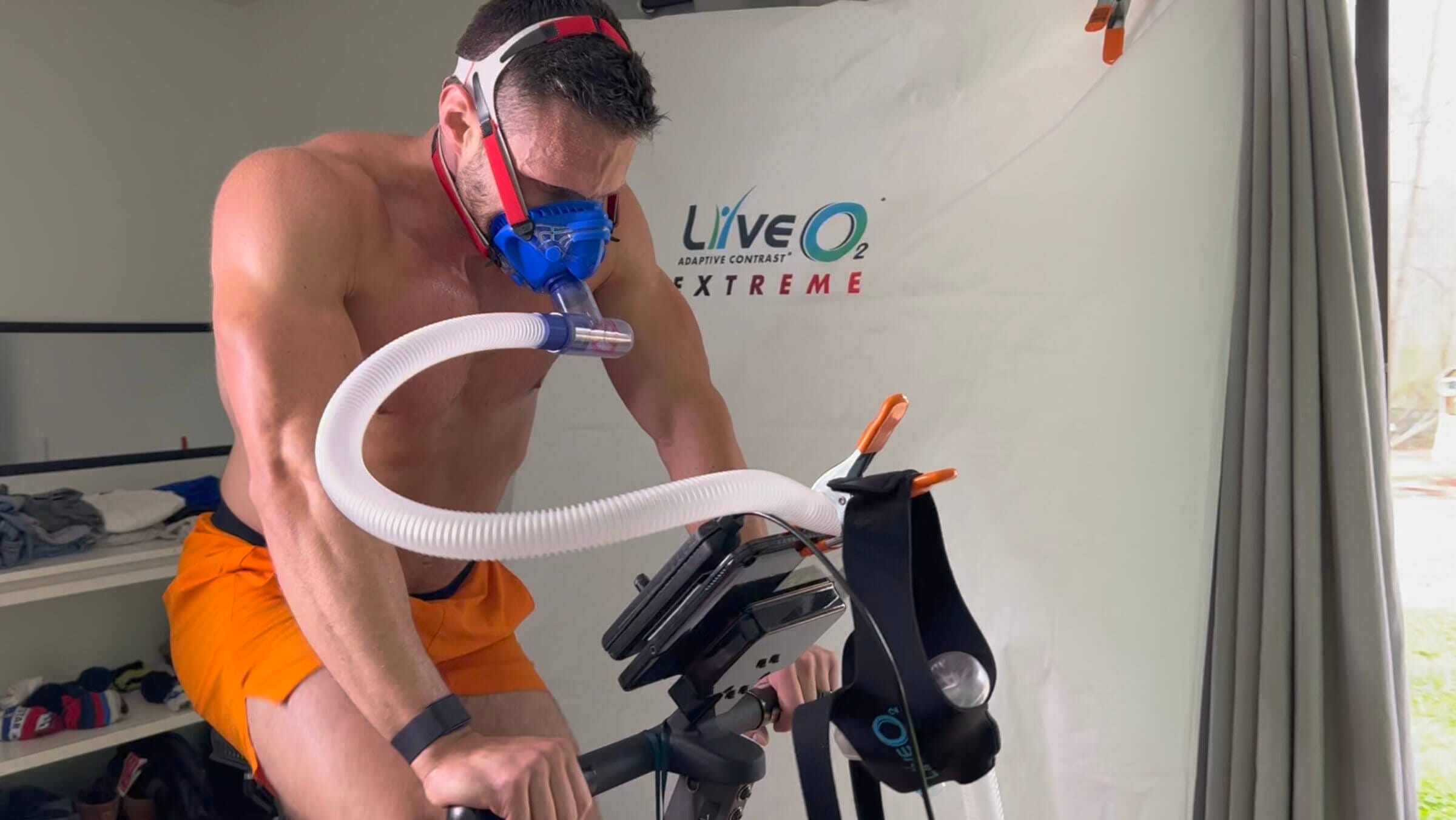

During my Wim Hof breathing exercises I often wear a pulse oximeter. My O2 level will drop into the 40s during longer no breath holds. is that hypoxic training.
I think Wim said his drops to 30.
Hey Jerry,
Yeah, I supposed, that counts as hypoxic training!
Cheers,
Michael
I would like to know at what elevation this begins to occur? I prefer to go to a higher altitude and experience burning out some toxins from my cells that aren’t coming out with other methods. Can you give me that information please?
Hi Diana,
considering that many athletes train at 5,000+, I’d say you start getting benefits around that altitude. The higher you go and the less oxygen there is, the quicker your body might adapt.
Cheers,
Michael
Hi Michael,
Great article. I’d love to chat more with you, as I’ve just launched a group training facility Air Locker http://www.airlockertraining.com in which we simulate high altitude in the entire room.
The purpose of the business is to make hypoxic training available to everyone.
I’d love to connect.
Hey Roman,
how can I help?
Cheers,
Michael
I thought I would throw this out. I was just listening to David Sinclaire, the longevity professor (he has a series of lectures on Spotify). If I could summarize, his theory of aging and dis-ease involves the degrading of the specialization of cell functions (and unwinding of the DNA so it does not function appropriately). I hope I got that mostly correct. I am wondering if the support of mitrochondria via hypoxic training, will result in an age blunting effect by reversing this tendency towards entropy in the cell and its’ DNA.
Hi Michael,
I read Dr. Sinclair’s book last year and thought that it was fascinating. Based on my understanding on the subject, mitochondrial dysfunction is one of the underlying causes that lead to cell death and aging. Hypoxic training can prevent (or, at least, reduce) that from happening and so I think, it’s a great tool to positively influence the aging process.
Cheers,
Michael